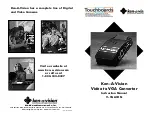
V1.02
Thom Hogan’s Complete Guide to the Nikon D300
Page 30
• The D300’s core imaging system, including the dedicated
ASIC, has been upgraded (and named: it’s now called
EXPEED). There have been modest improvements in all
aspects of JPEG (and now TIFF) image handling.
• The D300 gets the 51-sensor Multi-CAM 3500DX
autofocus system (the D3 gets an almost identical system).
This new system covers a wider area than the D200’s, has
more cross-type sensors for low-light sensitivity, and
nearly 3.5 times the sensing area. Not only is the sensor
improved, but so is the associated circuitry. The CCD in
the viewfinder is now integrated into the autofocus system
to help recognize and track moving objects. Also new to
the autofocus system is the ability to adjust individual
lenses for front or back focus problems.
• Image processing settings have been changed. Instead of
preset optimizations like the D200 has, the D300 has user
customizable “Picture Controls” (see page <334>).
Additional options, such as Active D-Lighting are now
available.
• Matrix metering has been enhanced. The new system now
better recognizes “scenes”—especially those with people
in it—and makes adjustments accordingly. Other
functions, most notably Active D-Lighting and focus, can
impact how the meter determines exposure.
• The D300 viewfinder now shows 100%
6
of the frame
instead of the 95% of the frame the D200 shows. Other
aspects of the viewfinder remain unchanged.
• The shutter has received a few improvements. First, it’s
now rated to 150,000 exposures. More interesting, it has
been tuned to provide both a shorter shutter lag (45ms
versus the D200’s 50ms) and shorter viewfinder blackout
time (100ms; the D200’s was longer but unspecified).
6
Manufacturing issues and tolerances make this more like a 99%+ accuracy, but it’s
no more than a few pixels off on any given D300, where the D200 could be as many
as a couple of hundred pixels off.
















































